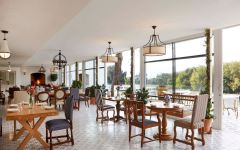Boschendal Sommelier Selection Pinotage 2014


Product Details
Your Rating
Somm Note
Winemaker Notes
In South Africa we love to braai. Pinotage is truly South African, so serve it with your best grilled meats, pork belly and even slightly spicy curries.






Boschendal (Dutch: wood and dale) is one of the oldest wine estates and farms in South Africa and is located between Franschhoek and Stellenbosch in South Africa’s Western Cape. Boschendal is a quintessential model for holistic country living. The team's vision is that the winery's future will be as remarkable as the past. It is the people that give life to Boschendal and their dream is that this extraordinary Estate will forever be a treasured home filled with new generations who will love and care for this icon of the Cape through this century and beyond.
The farm’s title deeds are dated 1685. The estate’s first owner, Jean le Long, was one of the party of 200 French Huguenot refugees who were fleeing religious persecution in Europe. A stunning property, the Boschendal estate is crowned by the original Cape Dutch manor house, which is open to visitors, together with associated restaurants and outbuildings and visitor attractions. The estate includes the Manor House, the Verf Restaurant, a café/deli, historic gardens and luxury accommodation.
The vineyards at Boschendal cover 2.54 km between Groot Drakenstein and Simonsberg, and include substantial plantings of Chardonnay and Sauvignon blanc, together with smaller plantings of Cabernet Sauvignon, Merlot and Shiraz. Contract vineyards are located throughout Western Cape, with a large concentration in the region of Elgin to focus on Pinot Noir and Chardonnay.

South Africa’s signature grape, Pinotage is a distinctively earthy and rustic variety. In 1924 viticulturists crossed finicky Pinot Noir and productive, heat-tolerant Cinsault, and created a variety both darker and bolder than either of its parents! Today it is popular in South Africa both as a single varietal wine and in Cape blends. Somm Secret—The name “Pinotage” is a subtle portmanteau. The Pinot part is obvious, but the second half is a bit confusing. In the early 1900s, Cinsault was known in South Africa as “Hermitage”—hence Pinotage.

With an important wine renaissance in full swing, impressive red and white bargains abound in South Africa. The country has a particularly long and rich history with winemaking, especially considering its status as part of the “New World.” In the mid-17th century, the lusciously sweet dessert wines of Constantia were highly prized by the European aristocracy. Since then, the South African wine industry has experienced some setbacks due to the phylloxera infestation of the late 1800s and political difficulties throughout the following century.
Today, however, South Africa is increasingly responsible for high-demand, high-quality wines—a blessing to put the country back on the international wine map. Wine production is mainly situated around Cape Town, where the climate is generally warm to hot. But the Benguela Current from Antarctica provides brisk ocean breezes necessary for steady ripening of grapes. Similarly, cooler, high-elevation vineyard sites throughout South Africa offer similar, favorable growing conditions.
South Africa’s wine zones are divided into region, then smaller districts and finally wards, but the country’s wine styles are differentiated more by grape variety than by region. Pinotage, a cross between Pinot Noir and Cinsault, is the country’s “signature” grape, responsible for red-fruit-driven, spicy, earthy reds. When Pinotage is blended with other red varieties, like Cabernet Sauvignon, Merlot, Syrah or Pinot Noir (all commonly vinified alone as well), it is often labeled as a “Cape Blend.” Chenin Blanc (locally known as “Steen”) dominates white wine production, with Chardonnay and Sauvignon Blanc following close behind.
